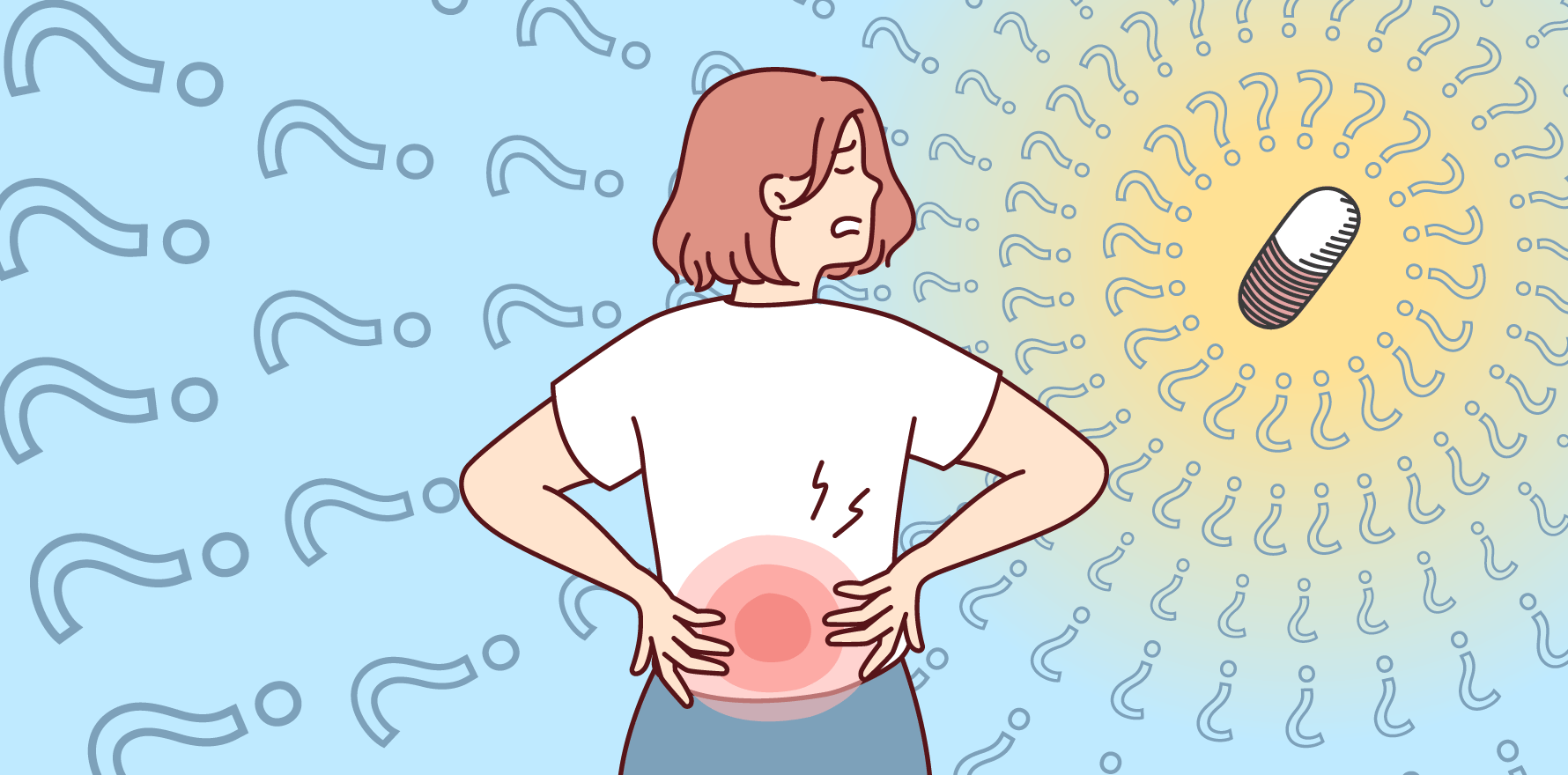A study found no benefit over placebo for acute back and neck pain, but a specialist says the evidence doesn't support a change in practice.
Calls to abandon opioids for acute low back pain have been soundly criticised by an Australian pain expert, saying the findings from a recent well-publicised study did not warrant such advice.
Associate Professor Michael Vagg, a Melbourne rehabilitation and pain medicine physician, hit back at the coverage and claims of the Australian study that suggested opioids were no better than placebo for acute back and neck pain.
According to The Lancet paper, a short course of 20mg per day oxycodone-naloxone did not reduce pain severity when participants were surveyed at six weeks compared with placebo.
“Opioids should not be recommended for acute non-specific low back pain or neck pain given that we found no significant difference in pain severity compared with placebo,” the researchers wrote.
“This finding calls for a change in the frequent use of opioids for these conditions.”
But Professor Vagg said the study did not provide enough evidence to overturn the consensus around the use of opioids.
“They generalise enormously,” said Professor Vagg, director of professional affairs for the faculty of pain medicine at the Australian and New Zealand College of Anaesthetists.
“They studied oxycodone and naloxone in a modified-release formulation. But modified-use opioids have never been on-label for use in acute pain and they are not recommended as such and have not ever been PBS-listed for such.”
“In layman’s terms, they’ve done a study where they tried to look at doing push-ups to help with back pain and then they’ve decided that all exercise is no good for the back pain.”
The blinded, placebo-controlled, multicentre trial included 347 patients with acute lower back or neck pain, or both, who were randomly assigned to either a six-week course of opioid or a placebo.
After six weeks, the opioid group did not have better pain relief than those given the placebo, and quality of life and pain outcomes were better in the placebo group.
“There was no benefit of an opioid compared with placebo in people receiving guideline care for acute non-specific low back pain or neck pain,” the researchers said.
“No significant difference was found in pain severity at the primary timepoint (six weeks); however, we could not exclude a small benefit favouring placebo.”
But Professor Vagg said there were deficiencies in the study. It wasn’t clear whether the patients received opioid treatment according to the guidelines. The researchers did not confirm whether patients in the placebo group were taking other medication such as paracetamol or anti-inflammatories, and only just over half the patients completed 80% of the study, he said.
Professor Vagg also noted that neck pain and acute back pain were two distinct conditions, and only 22 of the patients in the study had neck pain.
“They say that it doesn’t look as though modified-release opioids are very effective for giving short-term pain relief, to which I and everyone in pain medicine would say ‘We figured that out ages ago’. That’s not how you use opioids in acute pain,” he said.
“You use immediate-release formulations, you check closely that they are working, you monitor side effects, and you taper them after three or four weeks regardless of whether they’ve been very helpful or not. And in fact, if they’re not helpful, you taper them much quicker. That’s the standard advice from the guidelines.”
As for what did work, unfortunately, there were no consistently effective treatment for acute neck and back pain, Professor Vagg said.
“Nothing works very well for everybody. And that’s probably because there are lots of different causes, people’s responses to opioids vary and people’s response to anti-inflammatories vary.”
Professor Vagg said GPs could refer to the Australian Commission on Safety and Quality in Health Care’s statements on opioid analgesic stewardship, which were recently updated.
“This study does not overturn them. It is not robust evidence of what is being claimed in our opinion.”
Nevertheless, Professor Vagg said it was important to manage the patient’s expectations at the beginning of treatment that opioids would be weaned at the earliest opportunity and earlier if they were not helping.
He advised reassuring patients that back and neck pain would improve at an unpredictable rate, but for 80% of people the pain would resolve within six to eight weeks regardless of what treatment they had.
“The other evidence-based message is that there is no consistently effective acute treatment other than being as active as you can and trying to keep yourself moving while you wait for it to settle down.
“Try a few different medications and see if they help. If they don’t help, don’t use them, and if they do help, use them for two or three weeks to nurse yourself through the worst of the pain and try and keep moving.”
Professor Vagg said the first line of treatment before opioids would be paracetamol, short-acting and long-acting anti-inflammatories such as ibuprofen or diclofenac, and then move up to celecoxib or an injectable ketorolac.
Inhalational analgesia could be used if a patient needed to be moved from home into an emergency department, he added.
“By the time you get to giving opioids, there’s usually a lot of other stuff that can be given first. Give that a chance to work for you before you move on to using opioids.
“If you’re going to use opioids, probably 80% of my colleagues will probably use tapentadol first as the first oral opioid.
“If there was a reaction to tapentadol you might use oxycodone or morphine. But again, you would use it in their immediate release formulation, and you would use it for two to three weeks while they’re going through the worst of the pain.
“We need to get away from this idea that everybody who has any exposure to opioids for any reason is immediately going to turn into an addicted dope fiend. That anti-opioid hysteria is still around.
“But on the other hand, we do not want to be blind to what we do know about the risks of these drugs. About a quarter of the people in Australia who are on long-term opioids, went into hospital not on opioids and when they came out they never came off them.”
Lead author Dr Caitlin Jones said oxycodone and naloxone were used in the study to avoid unblinding due to opioid-induced constipation.
“This combination of oxycodone and naloxone is available as the modified release formulation called Targin in Australia,” said Dr Jones, postdoctoral research associate at the University of Sydney with an interest in the benefits and harms of treatments for musculoskeletal conditions.
“Importantly, naloxone does not reach the blood supply when administered orally, so does not disrupt the pharmacological effects of oxycodone.”
As a modified-release formulation, oxycodone-naloxone could be given every 12 hours rather than every four hours which is needed for the immediate release oxycodone formation, she said.
Dr Jones told TMR the study included acute non-specific back and neck pain as they were similar conditions and both impacted the spinal area, had similar patterns of recovery and were usually managed in similar ways.
Patients in both groups were also given “guideline-recommended care” which recommend that patients keep active and engage in physical exercise, she said.
“Participants were likely advised to keep active, but we did not monitor how much activity they did.
“All participants were free to use any other healthcare to manage their pain, including taking non-opioid medicines. We collected this information, and importantly, there was no difference between the groups in the amount or types of other pain medicines they took.”
Dr Jones said the findings provided clear evidence about oxycodone-naloxone and cast doubt on the value of any opioid for this particular population, but said other high-quality trials on other types of opioids would be useful.
“The good news is that the vast majority with acute low back and neck pain will get better within a few weeks without any treatment.
“If the pain is severe enough that the person feels they need to try a pain medicine, non-steroidal anti-inflammatories can be effective.”
The Lancet 2023, online 28 June
This story was updated with comments from Dr Caitlin Jones after publication.





